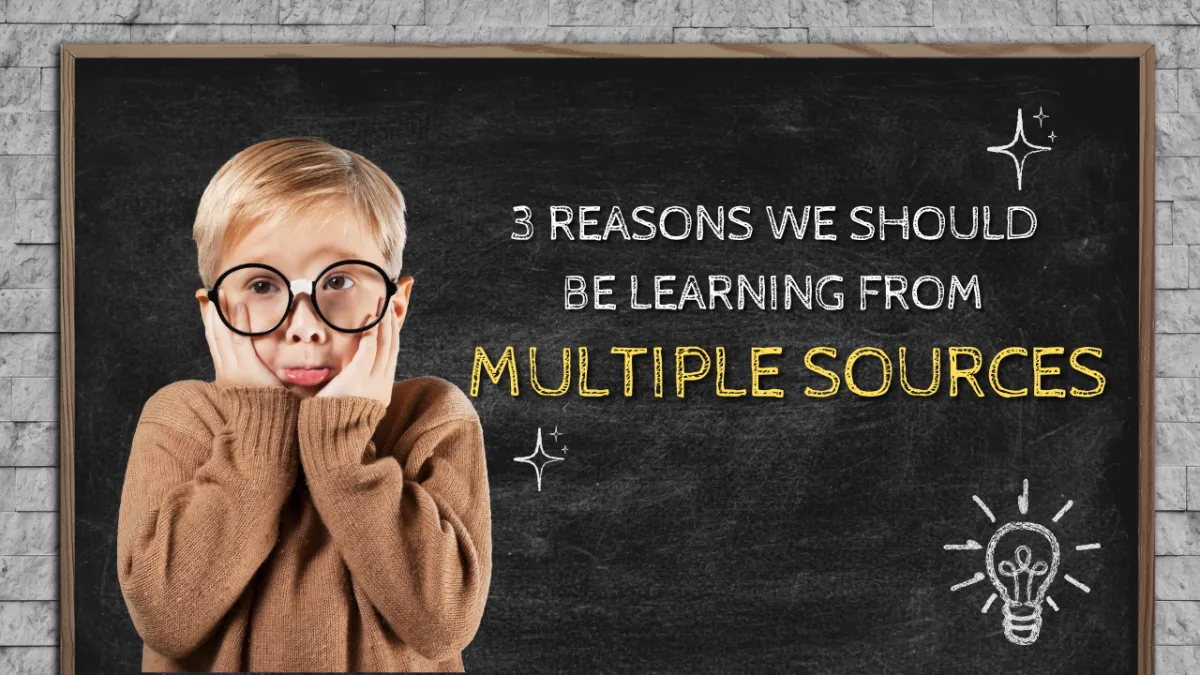The Ownership Advantage - Blog
Tanner O'Brien

3 Reasons Why We Should Learn from Multiple Sources
Learning is not just about getting information; it's about how that information is shared and internalized. Through my learning journey, I've discovered something transformative: when different people discuss the same topic, it's like experiencing a story from various viewpoints. This multifaceted approach enhances my ability to remember and apply what I've learned.
When we engage with different people discussing the same subject, it’s akin to examining a painting from multiple angles. Each person contributes their unique perspective, sharing their stories and insights in distinct ways. This process is similar to assembling a complex puzzle, where each piece adds to the overall picture, making our understanding more comprehensive and robust.
The Cognitive Benefits of Diverse Learning Sources
A significant advantage of learning from multiple sources is that it fosters new neural connections in the brain. Our brains thrive on diversity. When we encounter the same concept explained in different ways, it enhances our cognitive abilities, making us better at grasping and retaining information. For instance, a concept explained through a visual medium, like a video, might be more memorable for some, while a written explanation could resonate better with others.
Consider the complexity of understanding topics such as computer science or astrophysics. If you learn about computers from a passionate software engineer and then hear about space from an astrophysicist, you'll experience varied "aha" moments. Each expert brings their enthusiasm and specialized knowledge, which illuminates different facets of the subject. This diverse exposure constructs a richer and more nuanced understanding, akin to having multiple pathways converging to the same destination in your mind.
Practical Application and Versatility
Learning from a variety of sources also enhances our ability to apply knowledge in diverse contexts. Different people emphasize different aspects of a topic, providing a fuller, more layered understanding. This comprehensive grasp enables us to adapt our knowledge to various real-life situations effectively. For example, understanding a scientific principle from both a theoretical and practical standpoint allows you to apply it in academic research as well as in solving everyday problems.
Personally, I've found that my retention and application of knowledge improve significantly when I learn from multiple sources. Engaging with a teacher, watching educational videos, and reading books by various authors each contribute unique insights. This multi-source approach not only enriches my knowledge base but also builds a network of reference points that reinforce and deepen my understanding over time.
Embracing Diverse Learning Methods
To maximize the benefits of learning from multiple perspectives, actively seek out different methods of instruction. Attend lectures, participate in discussions, watch documentaries, read diverse authors, and explore interactive platforms. Each method offers something unique, adding to the richness of your learning experience.
For example, watching a documentary about space exploration can provide a vivid, visual context that a textbook might not capture. Similarly, reading a book by a renowned scientist can offer in-depth theoretical insights that a brief online article might overlook. By blending these learning methods, you create a holistic educational experience that leverages the strengths of each medium.
Conclusion: The Power of Diverse Perspectives
In summary, learning from different people and sources reveals the diversity and richness of human thought. Actively seeking out various ways of understanding a topic opens us up to a wealth of ideas, enhancing how we comprehend and utilize knowledge. Next time you embark on learning something new, consider not just the content but the myriad ways you can engage with it. Embrace the diversity of perspectives to cultivate a deeper, more versatile understanding that will serve you well in both personal and professional realms.
